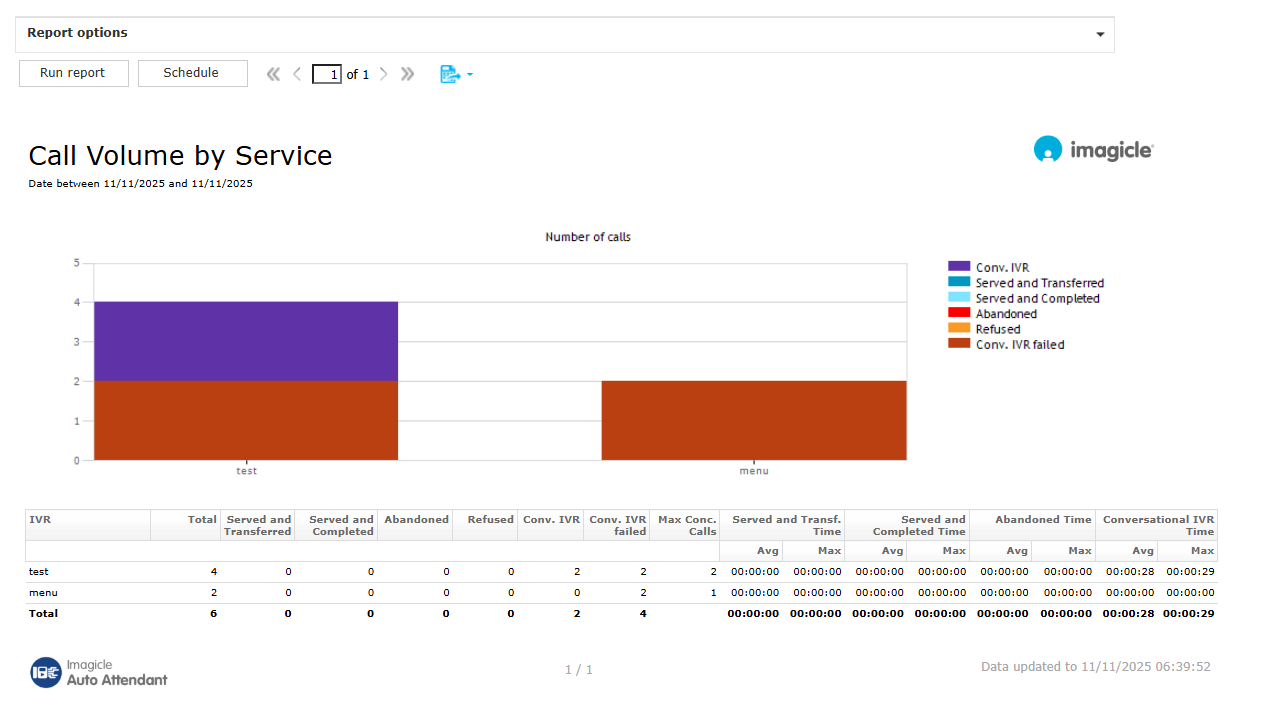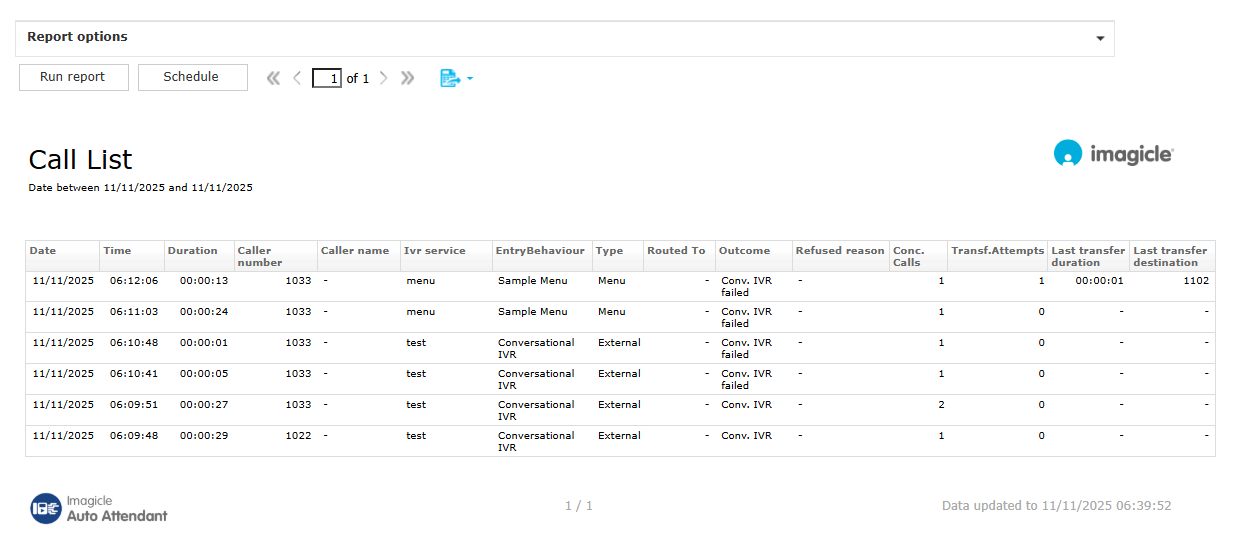Auto Attendant Reports
Imagicle Auto Attendant administrators and IVR Managers can analyze the details of managed calls, performing some statistics on the available data.
Auto Attendant stores in the database a Call Detail Record (CDR) for each call managed by an IVR service. Such CDRs include following information:
Date-Time of call arrival
Duration of the call, before being transferred or dropped
IVR Service: name of the service that managed the call
Entry Behaviour: the first behaviour that was triggered when the call arrived
Type: type of behaviour
Calling number
Caller Name: available if Speedy Enterprise is licensed and the number can be found in a Speedy public directory
Routed To: number the call was routed to
Outcome: classification of the call based on how it was terminated (see below).
Refused Reason: why the call was refused: Resource Exhausted or No Behaviour Defined for the pilot number.
Concurrent calls
Transfer Attempts
Failed transfers to Conversational IVR
Last Transfer Duration
Last Transfer Destination
Node ID: in HA installations, the cluster node that served the call
Record Id: needed for diagnostics only. Useful to locate the call in log files
Each CDR includes the outcome, that is the final treatment applied to the call. Possible values are:
Refused: the IVR could not answer the call, for example because there were no available channels. See the Refused Reason field.
Abandoned: the call has been disconnected by the caller, while being served by the IVR service.
Served and Completed: the call has been answered by the service, then dropped because of the selected behaviour.
Served and Transferred: the call has been answered by the service, then transferred to a destination number.
Running the Reports
The Reports can be accessed through the web interface by selecting relevant option on Auto Attendant menu.
The following reports are available:
Call Volume by Service - Show number of calls and wait duration per service and per outcome

Call Volume by Service and Behaviour - Show number of calls and wait duration per service, per behaviour and per outcome
Trends - Show the number of calls per outcome and time trend

Busy Channels analysis - Show busy channels statistics including average and max channel occupation over the day
Call List - Show call detail records

Interactive Call Detail Analysis - Search call details in an interactive grid
Each report can be filtered by clicking on "Report options" to restrict the results by specific parameters (e.g. call arrival time, service, behaviour...). Once filters are applied, you can "Run report" and display results in the browser.
Once generated, report can be exported in Word, Excel or PDF format.
Report Scheduling
Scheduled reports are executed periodically and sent via e-mail.
To schedule a report, setup the filtering options and run it from the web interface. Once you are satisfied with the result, press the "schedule" button. You'll be asked when the report must be automatically executed, and the recipients' e-mail address check or edit these settings later, through the Scheduled Reports web page.
Interactive Call Detail Analysis
Interactive Call Detail Analysis allows you to dynamically group and filter the call records. Here is how to do it.
First of all, select a time range for the calls you want to analyze
To filter the records, use the drop down lists in the column headers
To group data by a specific column, just drag it to the bar at the top of the grid
A checkbox allows to enable the extended version, showing all the fields
You can group by one or more column. When data are grouped, the total number of calls and the average values are calculated per group.
Filtering data
The table header include filtering capabilities for the data. Different column filters can be combined to extract the interesting portion of data. For example, setting a filter on the IVR Service column and on the Outcome column, extracts all CDRs related to that queue, with selected classification.
Changing any of the parameters updates the report contents. CDR are reported in the order they have been generated by Auto Attendant (descending order).
Once generated, each report can be exported in Word, Excel or PDF format.
